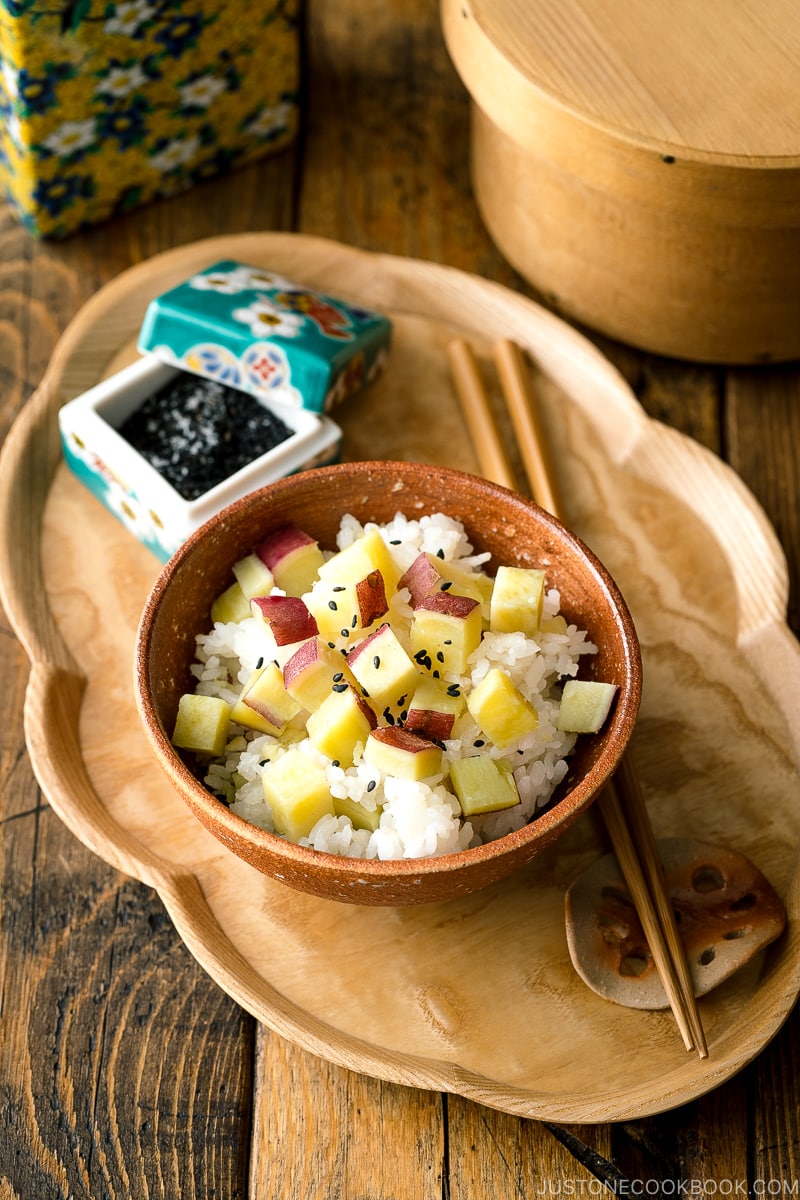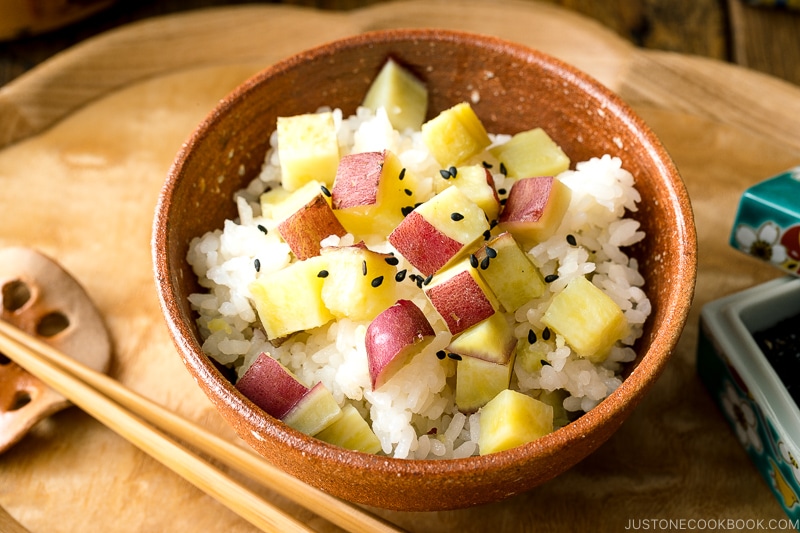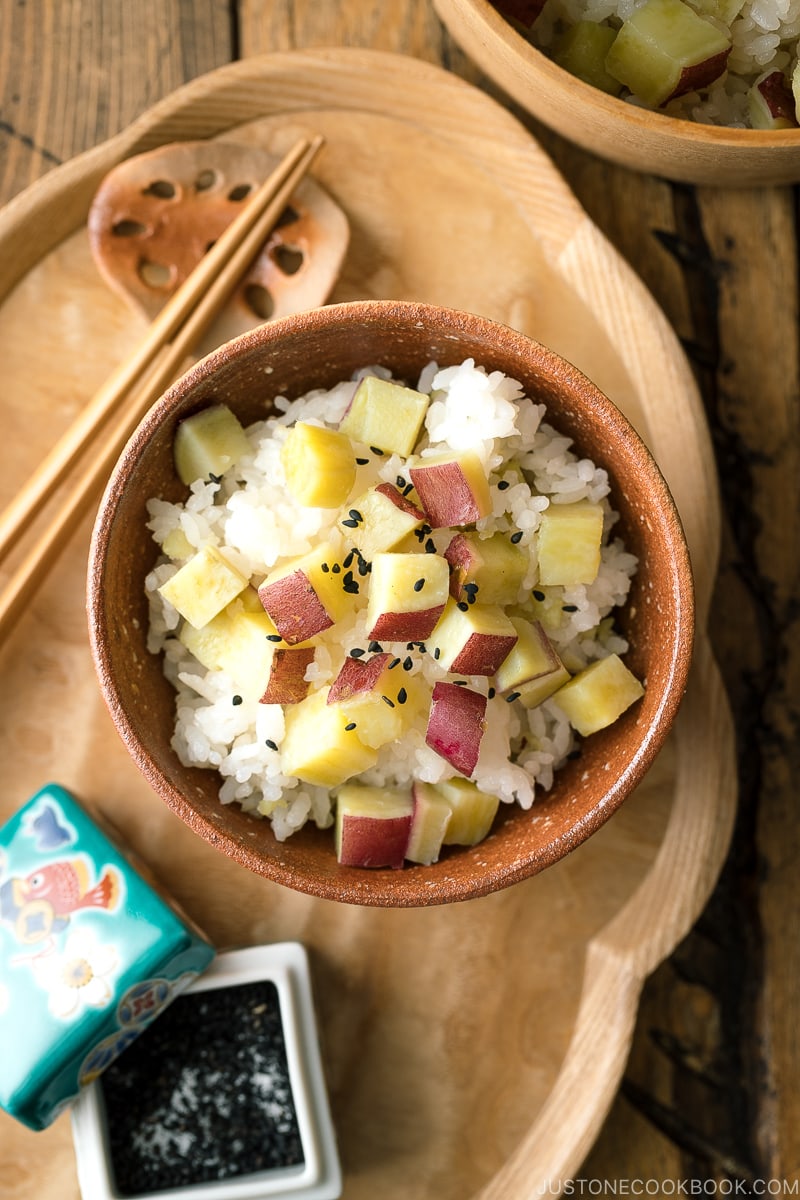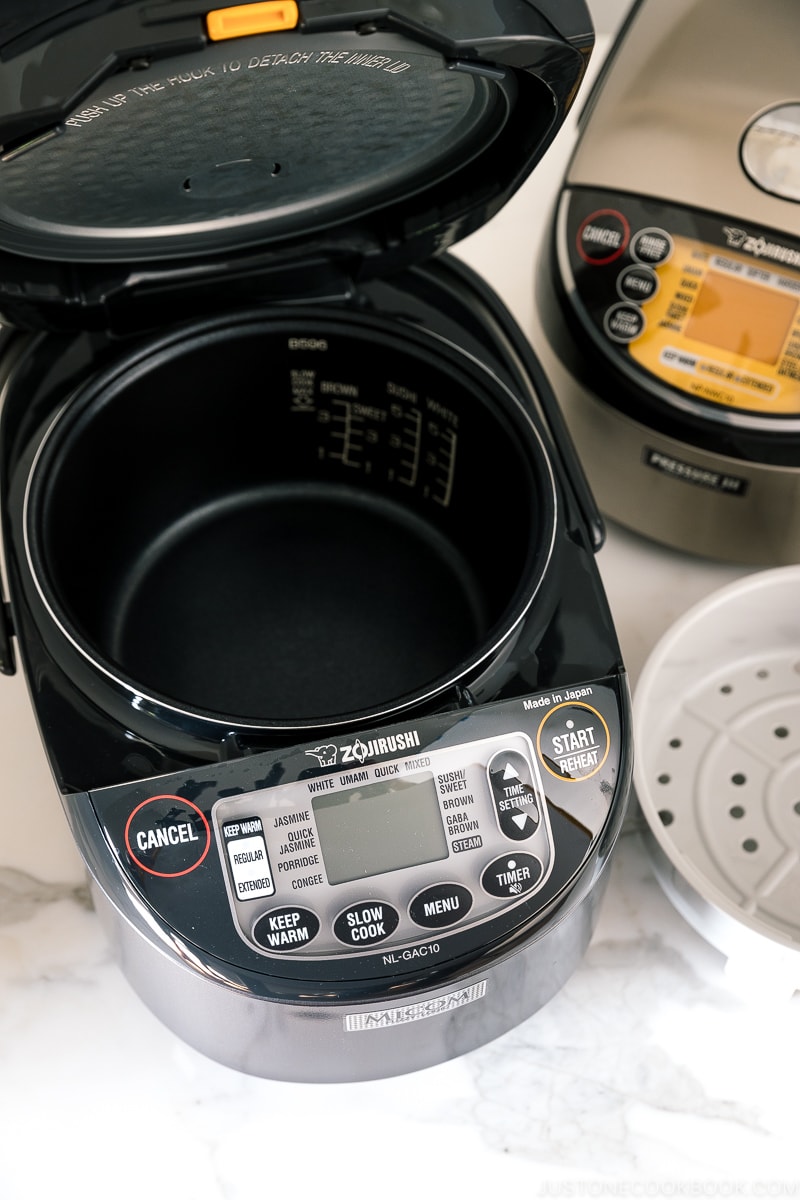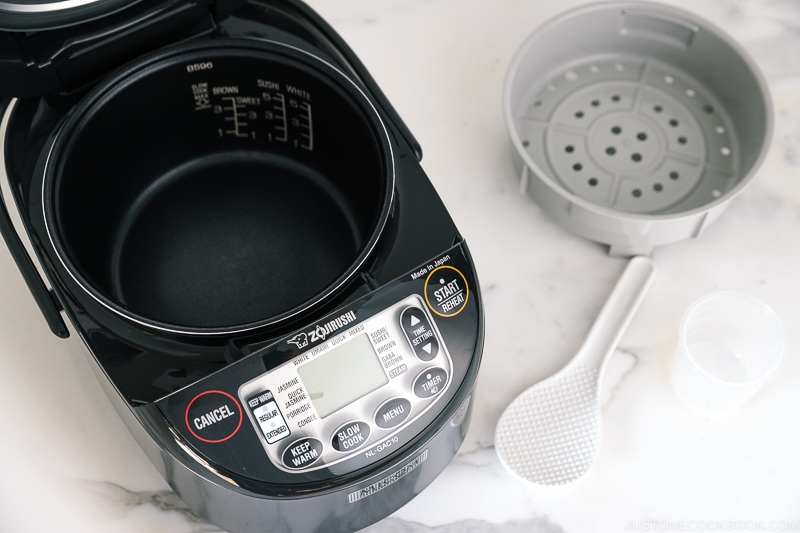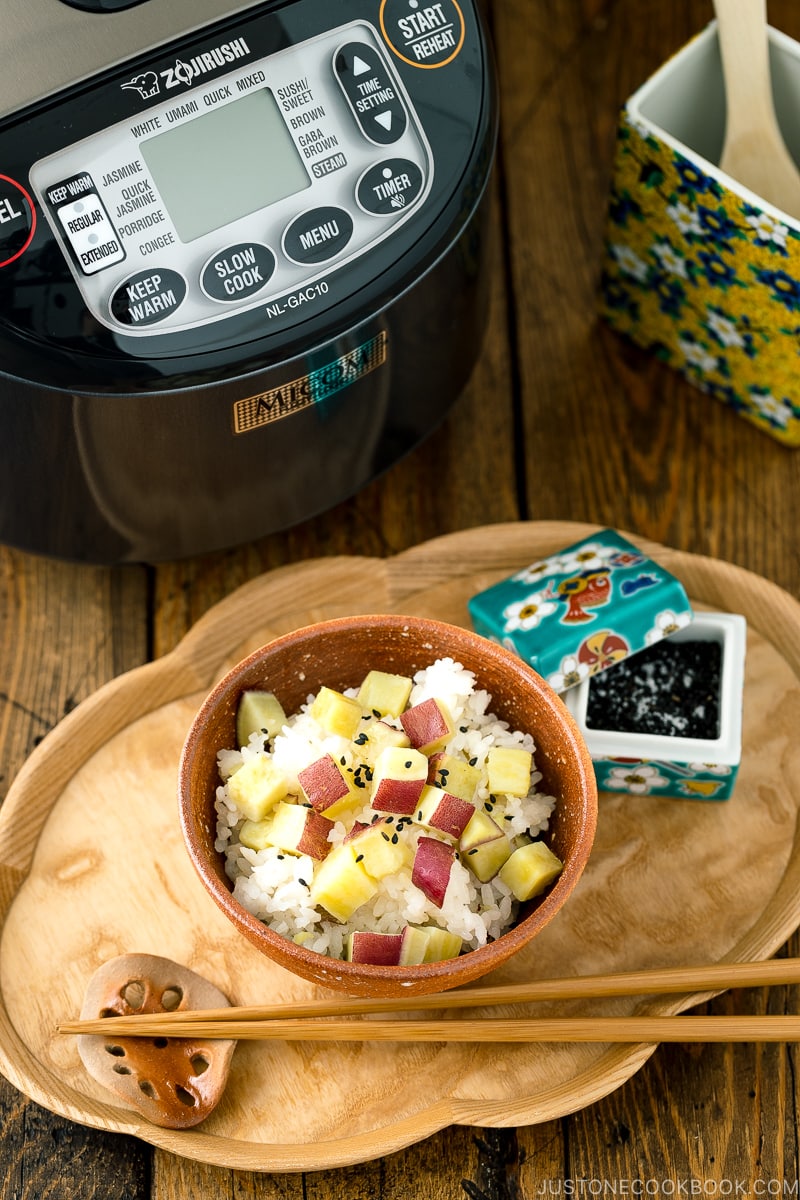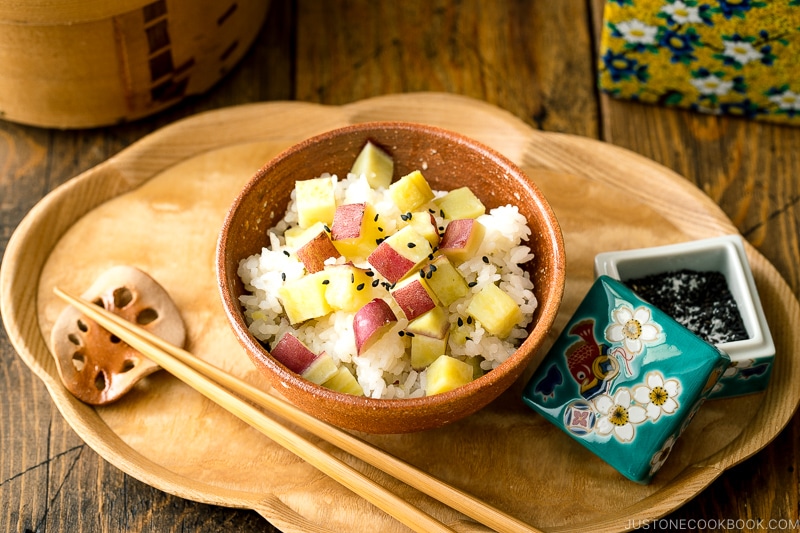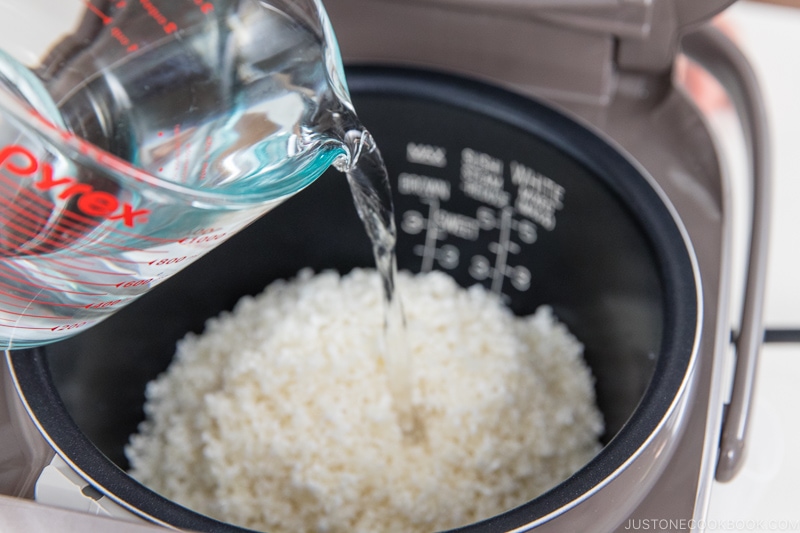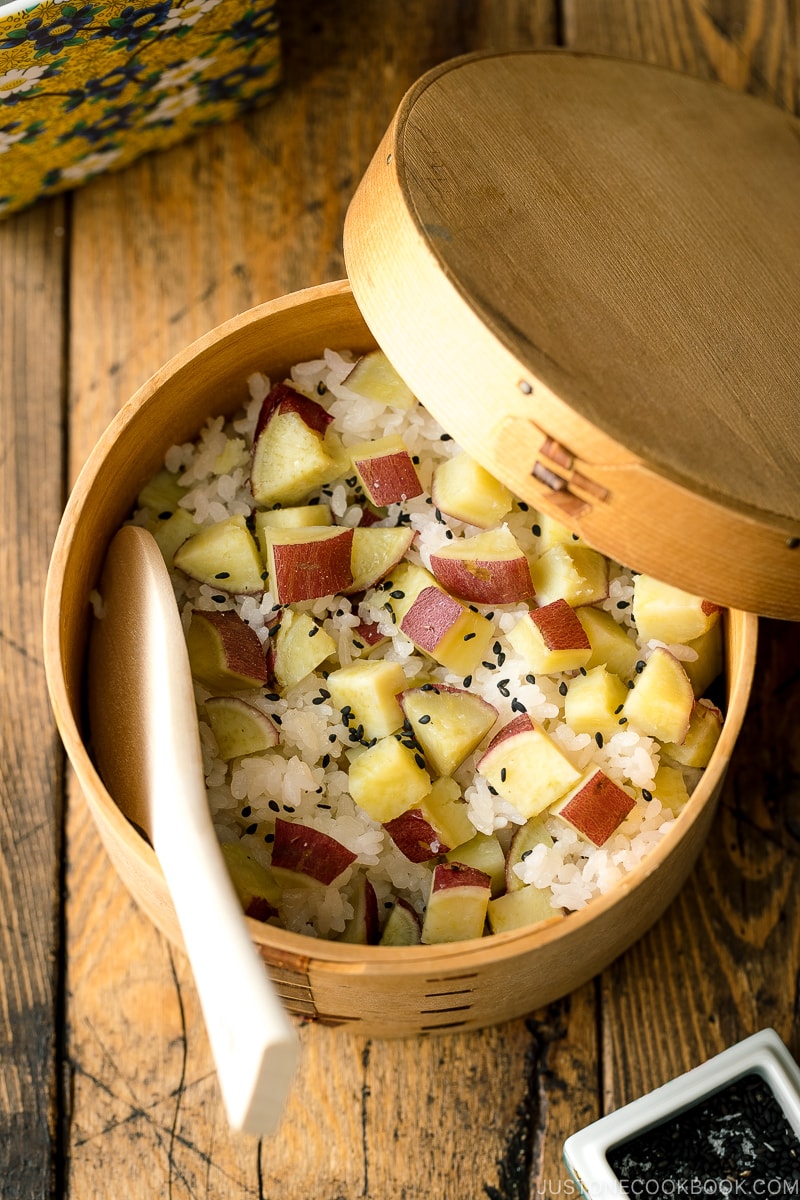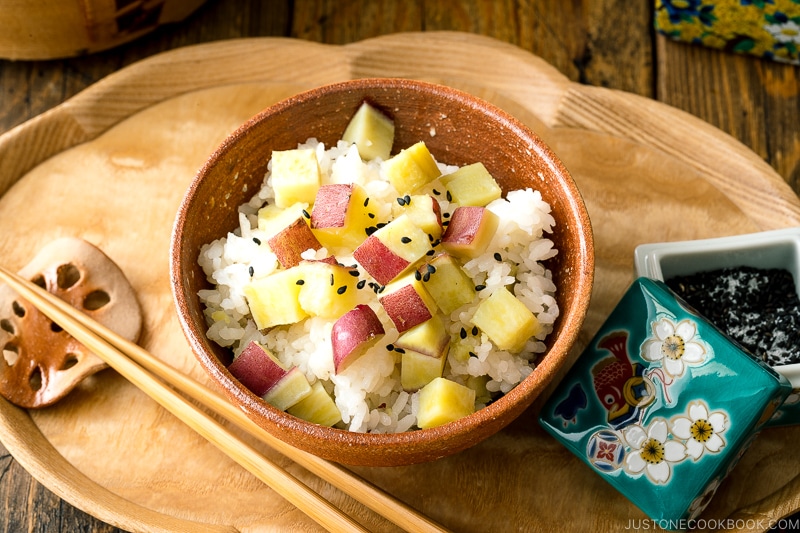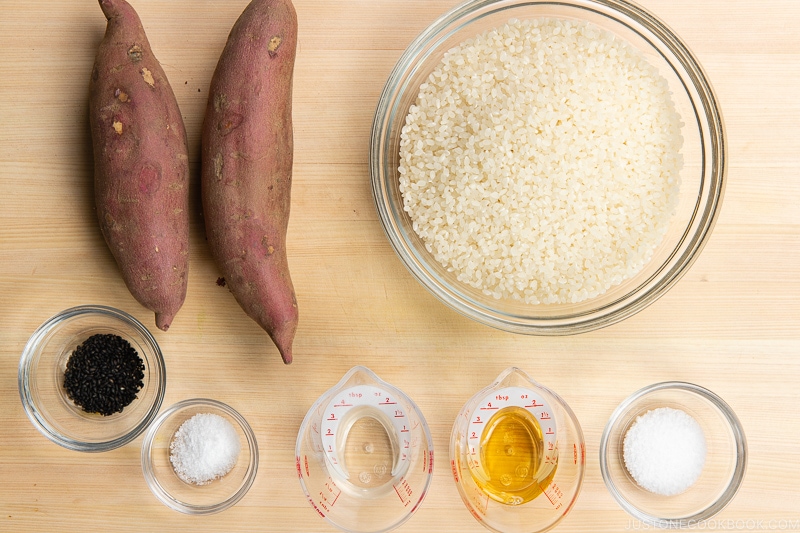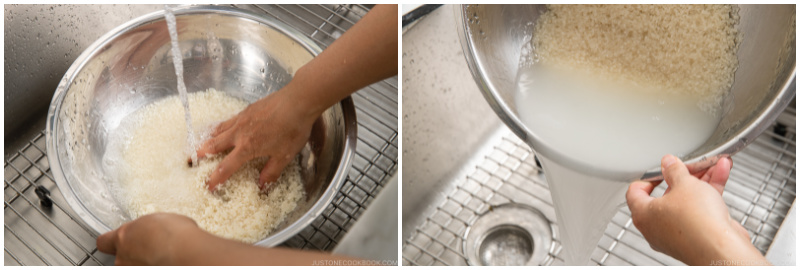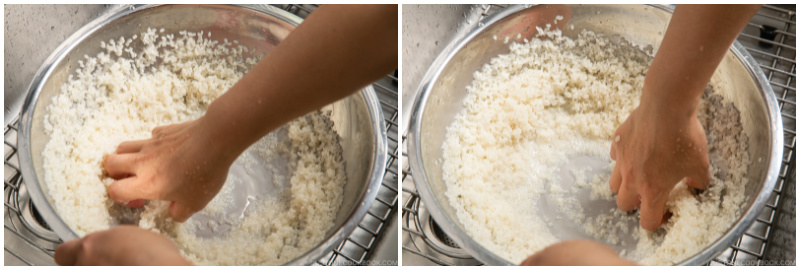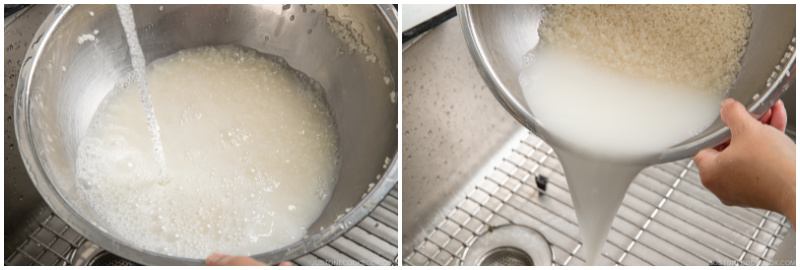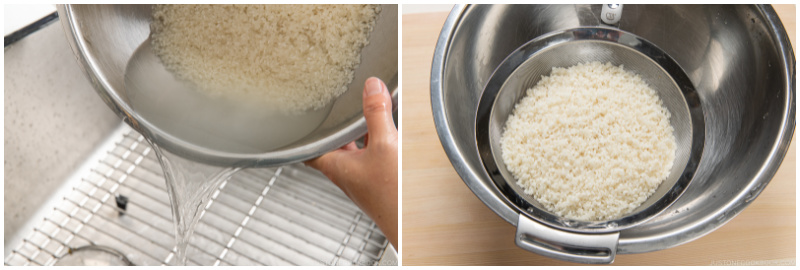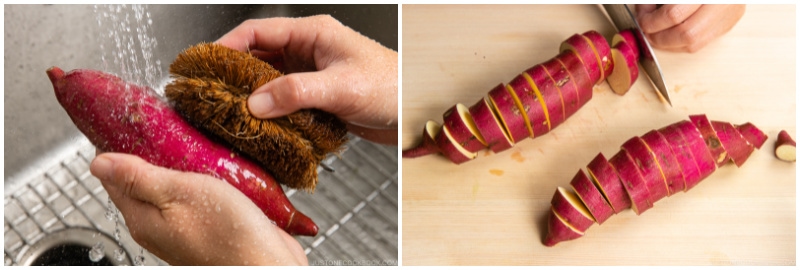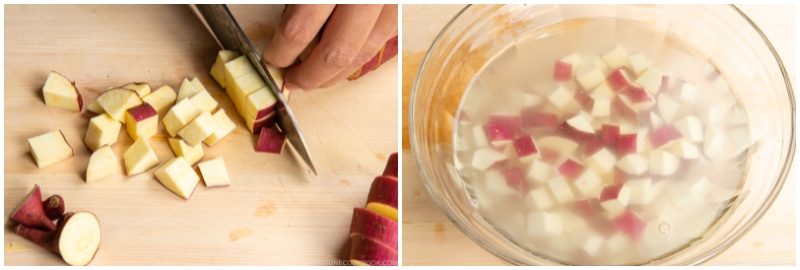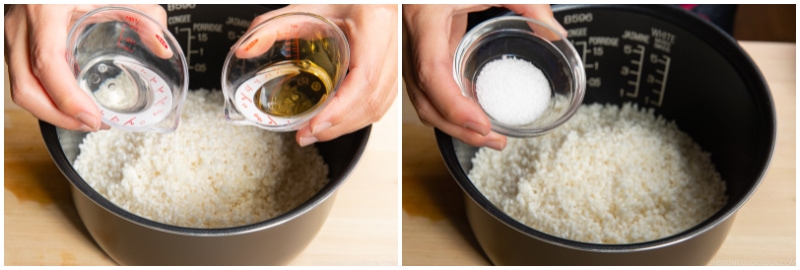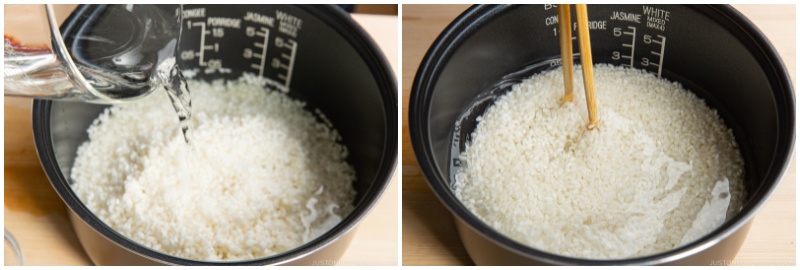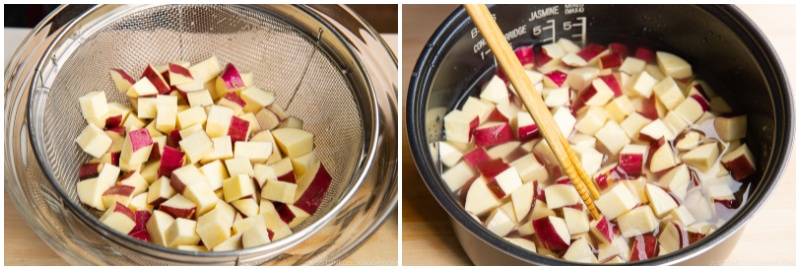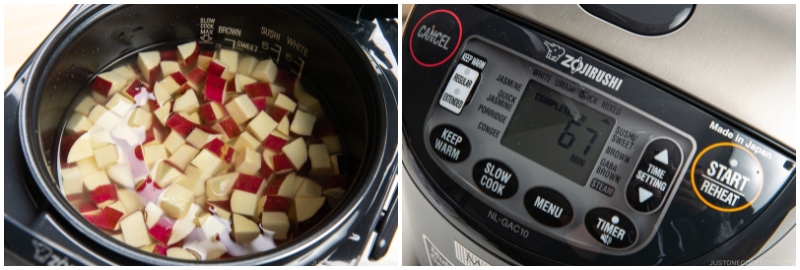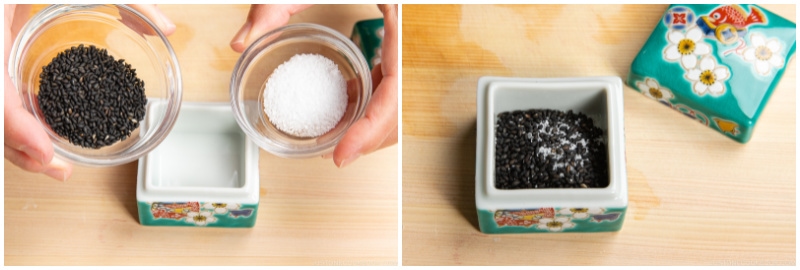The start of fall also feels like the official start to sweet potato season. During this time of year, I start craving sweet potatoes – more particularly the Japanese variety known as Satsumaimo. Known for its deep magenta skin, Satsumaino is the epitome of Japanese fall flavors. I have many beloved recipes – ranging from sweet to savory, but this Japanese Sweet Potato Rice or Satsumaimo Gohan (さつまいもご飯) is probably the best one to demonstrate the beauty and simplicity of Japanese home cooking.
What is Japanese Sweet Potato Rice?
In Japan, we welcome each season with mixed rice dishes that feature fresh seasonal ingredients, like Bamboo Rice and Green Pea Rice in the spring, and Corn Rice in the summertime. In the fall, we celebrate the season by making Chestnut Rice, Matsutake Rice, and of course, Japanese Sweet Potato Rice that I share today. These mixed rice dishes are essentially a combination of steamed rice cooked with 1-2 seasonal vegetables, sometimes with added greens, mushrooms, and protein like tofu, seafood, and poultry. What can you expect from Japanese Sweet Potato Rice?
Flavor – A mild flavored rice, yet I’d never call it bland. The focus is on the natural sweetness of the sweet potato and the aroma of fresh cooked rice. Texture – Warm, soft and tender sweet potato chunks mixed with fluffy rice. Ease – Super easy to prepare, and takes exactly the same time as cooking plain rice. Packed with nutrients – With the added sweet potatoes, the rice dish is packed with fiber, antioxidants, and vitamins. It is also warm and extra filling. An excellent carb choice for vegans or vegetarians!
How to Make Japanese Sweet Potato Rice
Ingredients You’ll Need
Japanese short-grain rice Japanese sweet potatoes (Satsumaimo) – See below about this variety and where to find it Seasoning: Mirin and salt Toppings: Gomashio (black sesame seeds and salt mixture)
So simple isn’t it? The key is to use high-quality Japanese rice and sweet potatoes that are in season!
Overview of Cooking Steps
A Quick Note on Satsumaimo
Japanese sweet potatoes aka Satsumaimo have an earthy, extraordinarily sweet flavor and luscious texture when compared to orange-fleshed sweet potatoes. The purple tubers are appreciated for its distinct nutty flavor akin to a roasted chestnut. They are starchier, drier, and denser in texture. Just like the regular sweet potatoes, you can roast, steam, deep fry, make desserts, or add them in soups or curries, or enjoy them in mixed rice. Japanese sweet potatoes don’t flake easily or get mushy, which make them ideal for various preparations. I can’t resist the simplest way of roasting or steaming them. These days you can find Japanese sweet potatoes available at major grocery stores like Whole Foods, Trader Joe’s, farmers markets, or local co-ops when they are in season. There’s plenty to love about Japanese sweet potatoes! You can learn all about it here.
Cooking in Zojirushi Rice Cooker
For this recipe, I used Zojirushi NL-GAC10 BM Umami Micom Rice Cooker & Warmer. Comes with an exclusive UMAMI setting, the rice cooker has the ability to extend soaking and steaming for enhanced flavor – which I find the ideal for simple dishes like this. Not only is the rice perfect, but the sweet potatoes turned out wonderfully tender. The multiple menu settings and cooking functions are well-designed, and I really enjoy its versatility and ease of use. Made in Japan, the Umami® Micom Rice Cooker & Warmer comes with these advanced features:
Advanced micro computerized Fuzzy logic technology Menu settings include: white, umami, mixed, sushi/sweet, Jasmine, porridge, congee, brown, GABA brown, quick white, quick Jasmine, and slow cook. It activates the rice for increased nutritional value, and the steam setting allows cooking without need for extra oils or fats. Convenient steam function and BPA-free steaming basket accessory Exclusive Umami setting Automatic keep warm, extended keep warm and reheat function Easy-to-clean clear coated stainless steel lid Convenient delay timer (2 settings) provides freshly cooked rice at the programmed time
How to Cook Sweet Potato Rice without Rice Cooker
If you don’t have a rice cooker, you can also use the following methods.
Stovetop
You can use a donabe (Japanese earhtenware pot) or a pot to cook the rice on the stovetop. I highly recommend using a heavy-bottomed pot for cooking rice. Pots with a thick base will prevent uneven hotspots and have a better heat distribution so the rice is less likely to stick to the bottom and get burnt. To cook, cover the donabe (or heavy-bottomed pot) with the lid. Turn on the heat to medium-high and bring to a boil. This should take about 8-10 minutes. Once boiling, reduce heat to medium-low and cook for 13-15 minutes. Turn off the heat, remove from the stove, and let it rest, undisturbed, for 20 minutes.
Instant Pot (Pressure Cooker)
The pressure cooker seals tightly during cooking, so the rice to water ratio is 1:1. Use high pressure for 2 minutes and natural release for 10 minutes.
3 Important Tips for Cooking Rice
Rice to Water Ratio
It’s always a fun discussion when it comes to rice to water ratio as internet tells you it should be 1:1. If you cook Japanese short-grain rice, please follow the Japanese method of preparing rice (the “correct” way). I explained more in this post.
So… Exactly How Much Water Do You Need for Each Cup?
The plastic rice cooker cup that comes with the rice cooker is a 180 ml cup. In Japan, this amount is called ichi go (一合). Here’s how much water you need for each rice cooker cup when you follow the 1:1.1 ratio.
How About Making Mixed Rice?
For sweet potato rice, or any mixed rice, the rice to water ratio should be still 1 to 1.1 (or 1.2). However, the mixed rice is often seasoned with other condiments to flavor the rice. Therefore, the “water” for mixed rice actually means total liquid, which includes water, condiments, and seasonings. So for example, if you include 1 Tbsp soy sauce and 1 Tbsp sake as seasoning for your mixed rice, 2 Tbsp (30 ml) of liquid should be counted for the total liquid amount.
What to Serve with Sweet Potato Rice
Serve Satsumaimo Gohan as you would with regular steamed rice. For a Japanese-style dinner, I like to pair it with:
Nameko Mushroom Miso Soup or Vegetable Miso Soup Mackerel Simmered in Miso (Saba Misoni) Chrysanthemum Greens and Tofu Salad (Shungiku Shiraae)
Wish to learn more about Japanese cooking? Sign up for our free newsletter to receive cooking tips & recipe updates! And stay in touch with me on Facebook, Pinterest, YouTube, and Instagram.
